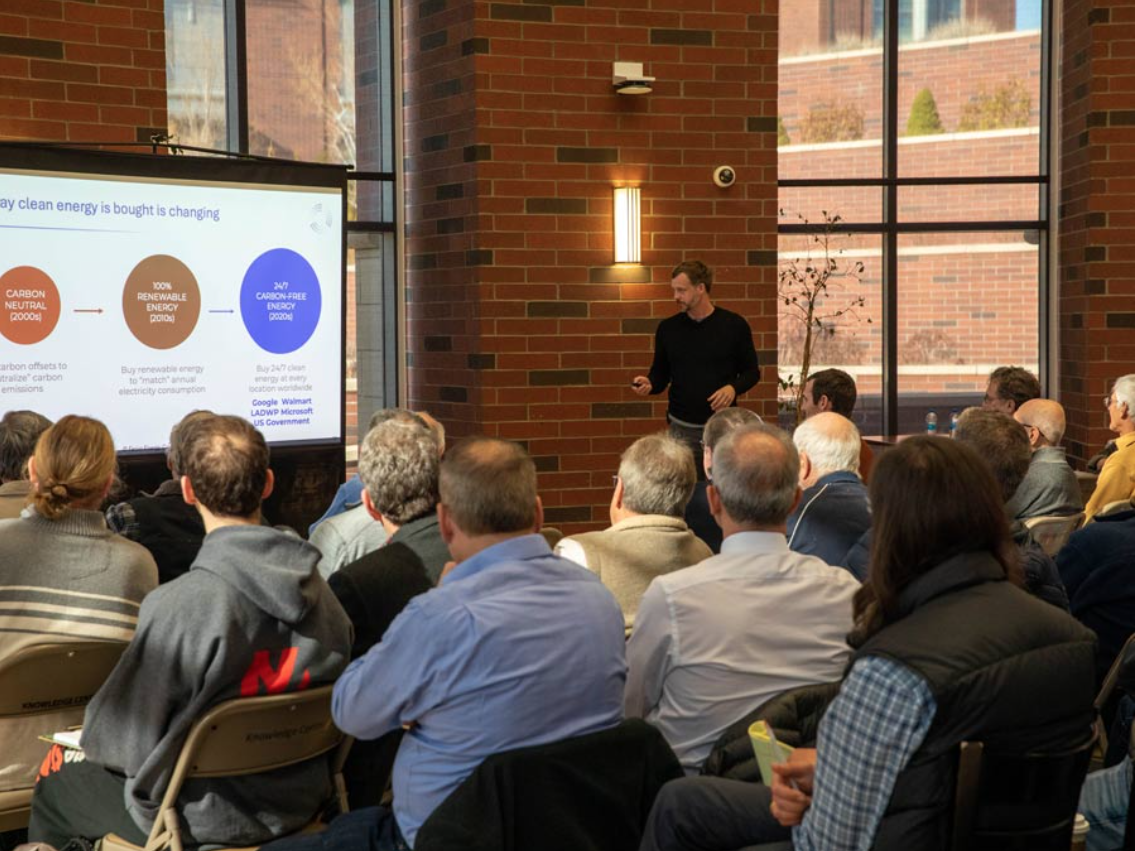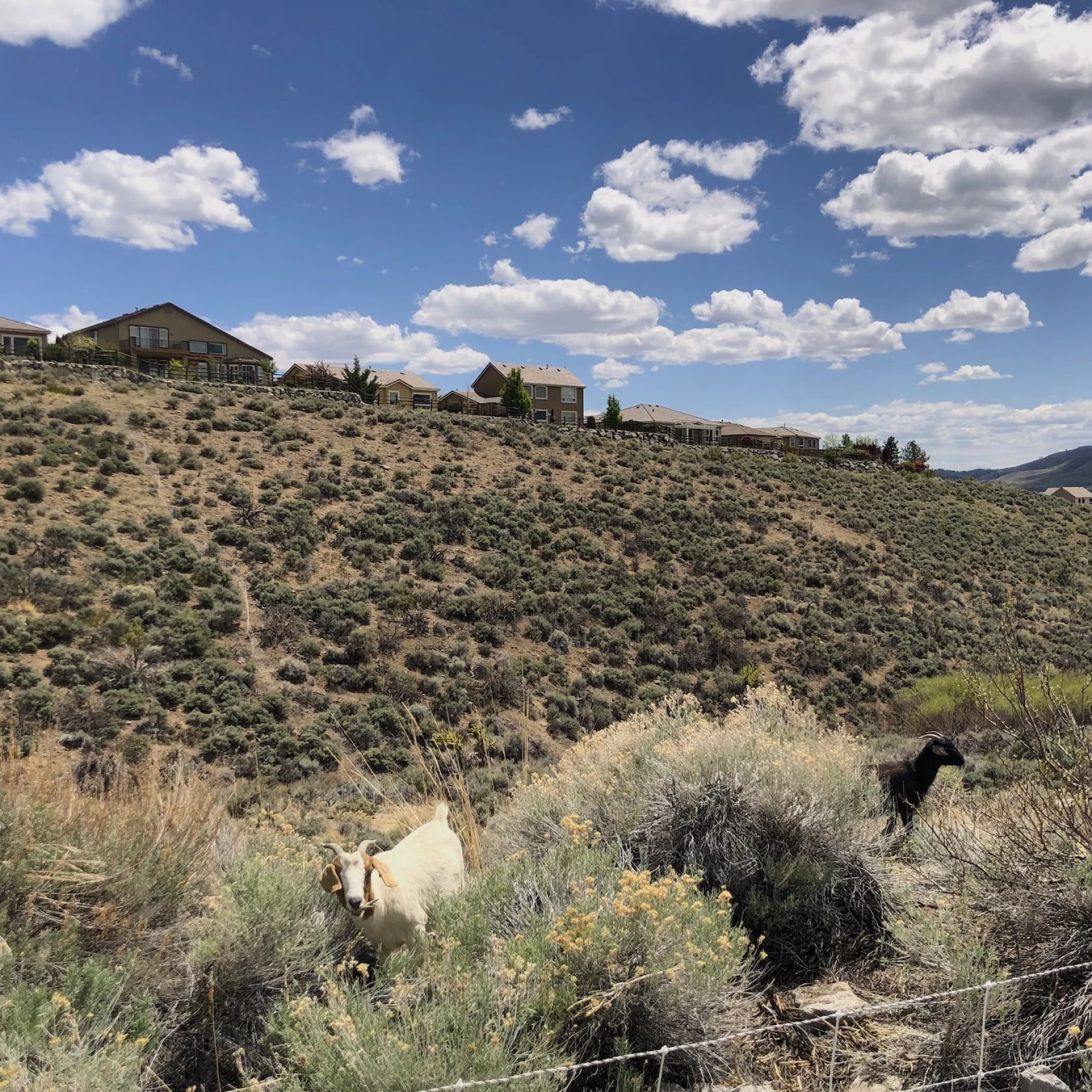The interior of the Earth is hot, and it gets hotter with depth. Geothermal energy takes advantage of this ever-present heat that is transmitted through rock and then transformed into electricity. It is one of the most promising renewable energy sources with low to zero emissions of CO2 and other pollutants that, different than solar and wind, runs around the clock, 24/7.
In April, Co-founder and Chief Technology Officer Jack Norbeck, of Fervo Energy, spoke at the Energy Solutions Forum hosted by the Colleges of Science and Engineering. Norbeck talked about the relevance of geothermal energy for today’s world and about next-generation geothermal projects happening in Northern Nevada.
“Whereas solar only works when the sun is shining, and the wind only works when the wind is blowing, geothermal is constant and has a lot of valuable properties and attributes to keep the grid reliable and steady,” Norbeck said.
An opportunity during an emergency
Scientific consensus recognizes that climate change is now an emergency and changes and innovations are needed, especially in energy systems, to meet goals for decarbonization and reach 100 percent renewable or clean energy. Norbeck explained that while solar and wind are fundamental components, they might not be cost-effective if applied alone.
“There need to be other resources that are in the mix to find the right balance of meeting clean energy while having a stable and reliable grid and keeping the cost down as low as possible,” Norbeck added. “There are only a few technologies out there that can fill that gap, and it’s things like hydro, nuclear, and geothermal primarily.”
Geothermal, then, may make up a large portion of the future energy mix.
An innovative approach
Fervo Energy, founded in 2017, uses technologies and innovations from the oil and gas industry that already exist and applies them to geothermal processes in new and cost-effective ways.
One perfect example is horizontal well systems, which are drilled down vertically to 7000 feet deep, curve 90 degrees, and then drilled several thousand feet parallel to the surface of the Earth at temperatures above 375 degrees Fahrenheit. This allows access to a much greater volume of rock on a per-well basis, making the process more economical and effective.
“Sometimes, the rocks don’t have good permeability and don’t have the right combination of conditions that allow them to be developed economically,” Norbeck explained. “With the application of horizontal drilling, you could tap into those resources and all of a sudden, the resource base is much larger than we think it is. That is a big opportunity to scale this resource up quick enough to make an impact in climate change.”
Partnering with Google in Nevada
It is not a coincidence that geothermal energy is being actively explored in Nevada, as the state is a prolific geothermal resource. As Norbeck explained, the crust has been stretched out over millions of years, and therefore the crust is really thin and the heat flow is higher, allowing for shallower and more economically efficient drilling.
“The Western power markets are evolving quickly in a way that values geothermal,” added Norbeck. “It’s a combination where you have really good geothermal resources based on the geology and you have really good market conditions and incentives due to the larger market trends. That makes Nevada an attractive place to do business.”
Fervo Energy is developing a commercial-scale pilot project in Northern Nevada. They began drilling in early 2022 and have drilled three wells, including the first two horizontals. To do so, the company signed a contract with Google as a corporate user for the power and renewable energy credits of the project.
Their goal for 2030 is to develop a pipeline of projects that will allow them to deploy one Gigawatt per year for the next decade.
The next and last speaker of the Forum is Yet-Ming Chiang from the Massachusetts Institute of Technology, who will talk about scalable solutions to large-scale electrical storage and industrial decarbonization. It will be held on Wednesday, April 26, and registration is open via Eventbrite.
More information
For details on UNR’s Energy Solutions Forum, visit: https://www.unr.edu/energy-solutions-forum
This story was produced in collaboration with Nevada Today: https://www.unr.edu/nevada-today/news/2023/esf-jack-norbeck
Vanesa de la Cruz Pavas is a graduate student at the Reynolds School of Journalism and a reporter for the Hitchcock Project.






